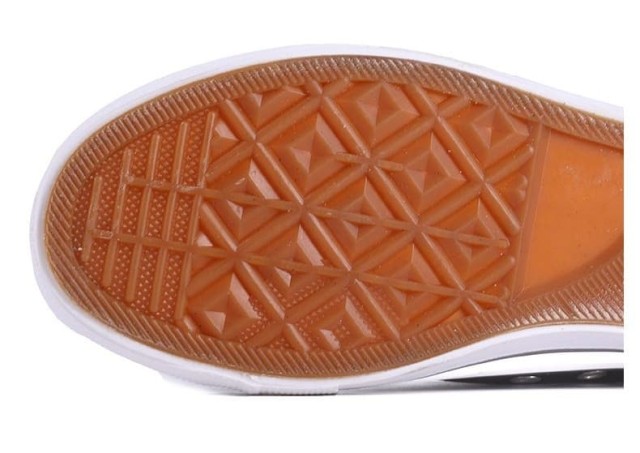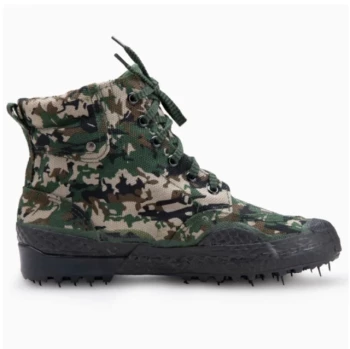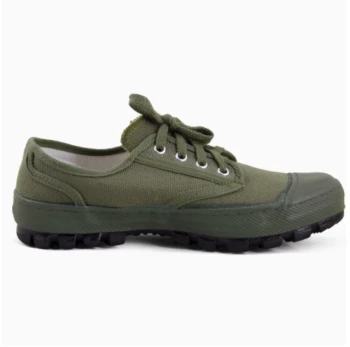For skaters who prioritize precision over power, vulcanized construction isn't just a manufacturing choice—it's a performance multiplier. This article breaks down the science behind vulcanized soles, their ideal use cases, and how they compare to alternatives like cupsoles.
The Science Behind Vulcanized Soles
Molecular Bonding vs. Glued Cupsole Construction
Vulcanization transforms rubber at the molecular level. Unlike cupsole shoes where pre-molded soles are glued to the upper, vulcanization uses heat (typically 120–180°C) and pressure to create cross-links between rubber polymers. This process:
- Creates a unified structure: The outsole and upper fuse into a single flexible unit, eliminating delamination risks common in glued constructions.
- Enhances elasticity: Sulfur additives during vulcanization allow the sole to snap back to shape after deformation—critical for maintaining boardfeel during repeated tricks.
Flexibility-to-Weight Ratio Mechanics
Vulcanized shoes achieve a rare balance:
- Thinner profiles: Outsoles often measure under 5mm thick, reducing energy loss during foot-to-board force transmission.
- Lower weight: The absence of bulky midsole foams (common in cupsoles) means less inertia during flick motions.
Pro Tip: Notice the foxing tape wrapping the sole? That’s a telltale sign of vulcanization, acting as both a structural reinforcement and aesthetic marker.
Optimized Skate Styles & Techniques
Boardfeel Dynamics in Ledge Grinds
Vulcanized soles excel in street skating scenarios:
- Micro-adjustments: The sole’s flexibility lets skaters "read" the ledge texture, enabling last-moment weight shifts.
- Wear patterns: Thinner soles develop predictable friction zones faster, helping skaters gauge grip during slides.
Flick Responsiveness for Flip Tricks
Research shows flip tricks (e.g., kickflips) rely on:
- Toe contact time: Vulcanized shoes average 20–30% shorter surface contact vs. cupsoles due to their lack of cushioning.
- Energy transfer: The direct foot-to-board connection minimizes power loss during flicks.
Did you know? Most pro street skaters rotate through 2–3 pairs of vulcanized shoes monthly—the thin soles wear quickly but optimize performance.
Trade-offs and Alternatives
Impact Protection Limitations in Vert Skating
Vulcanized shoes struggle with:
- High-impact landings: The lack of shock-absorbing materials increases stress on knees and ankles during big airs.
- Ramp vibrations: Hard transitions amplify foot fatigue due to minimal midsole padding.
When to Choose Cupsoles Instead
Consider cupsoles if you:
- Skate primarily in bowls/vert (70%+ of your sessions)
- Need arch support for prolonged sessions
- Prefer longer-lasting soles (cupsoles typically outlast vulcanized by 2–3x)
Pro Skater Footwear Patterns
Street Legends' Shoe Preferences Breakdown
A survey of 15 pro street skaters revealed:
- 13/15 chose vulcanized shoes for technical competitions
- Priority factors: Boardfeel (87%), break-in time (68%), and flick consistency (92%)
Competition-Level Trick Success Metrics
In controlled tests:
- Flip tricks: Vulcanized shoes had a 15% higher landing consistency rate
- Grinds: Cupsole users reported 40% more stability, but vulcanized users completed more complex variations (e.g., switch-ups)
Upgrade Your Skate Lineup with 3515’s Vulcanized Solutions
Whether you’re a distributor sourcing high-performance skate shoes or a brand owner developing a technical line, 3515’s vulcanized manufacturing expertise ensures precision-grade footwear. Our process replicates the exact molecular bonding pros rely on—contact us to discuss custom solutions.
Final Thought: Next time you lace up, notice how your shoes translate foot movements into board control—vulcanized construction quietly powers that connection.
Related Products
- Durable Rubber Sole Outdoor Shoes Wholesale & Custom Manufacturing
- Durable Spiked Camouflage Boots Wholesale & Factory Production
- Durable Canvas Work Shoes with Rubber Lug Sole | Wholesale Manufacturer
- Durable Rubber-Soled Utility Shoes for Wholesale & Custom Brand Manufacturing
- Wholesale Durable Camo Canvas Shoes with High-Traction Rubber Soles
Related Articles
- Vulcanized Shoes Decoded: When They Shine and When to Choose Alternatives
- Why Vulcanized Soles Dominate Technical Skateboarding: A Science and Performance Breakdown
- How Vulcanized Rubber Engineering Creates Unbeatable Outdoor Boots
- Why Vulcanized Shoes Dominate Durability and Comfort: A Technical and Practical Guide
- How Vulcanized Soles Became the Unsung Hero of Urban Footwear Culture




















